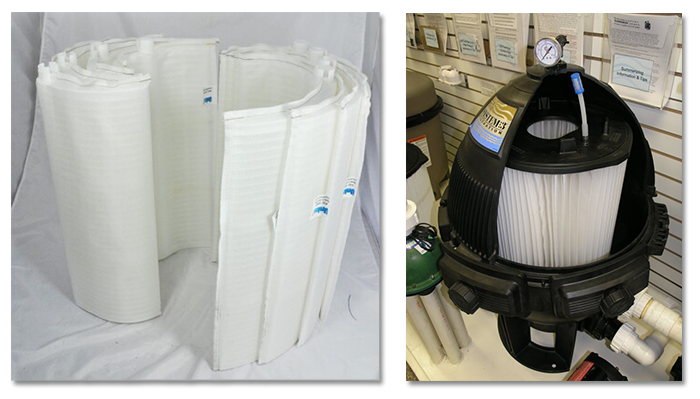Liquid And Air Filtration
Lumite has a long and exemplary history servicing the filtration industry. Our quality standards are rigorous, as our products are most often used in critical applications where fabric performance is essential.

We offer analytical capabilities for our customers including:
- Fiber composition
- Weave type
- Tensile strength
- Air flow resistance
- Pore size
Come to us with a specification or representative example of your filtration media requirements. We will do our best to evaluate and recommend a solution that meets your needs.

Industries using LUMITE fabrics:
- Chemical processing
- Mining
- Sugar refining
- Water filtration
- Waste water treatment
- Food and beverage (FDA approved fabrics)
- Pool and spa
- Pulp and paper
Fibers and Yarns
The backbone of the filter
The four main types of fibers and yarns are:
- Monofilament
Single continuous lengths of extruded synthetic fiber.
- Multifilament
Produced by bundling continuous strands of extruded synthetic filaments that may or may not be twisted to form a single yarn.
- Spun Yarns
Made of short strands of fiber that are twisted together to form a single yarn.
- Fibrillated Tape
A slit film fiber cut into a pattern of fibrils that may or may not have been twisted.
Yarn Properties
Our three most requested yarns are polypropylene, nylon and polyester. Each fiber has its own distinct advantages:
Polypropylene-
- Excellent resistance to most mineral acids and alkalis
- Very good resistance to bleach and solvents
- Very good resistance to aging, indirect sunlight and abrasion
- Not weakened by mildew
Nylon
- Excellent tensile strength
- Excellent resistance to abrasion
- Very good resistance to alkalis
- Very good resistance to solvents
Polyester
- Provides excellent tensile strength
- High melting point (482 degrees-544 degrees F, depending on type)
- Very good resistance to weak alkalis and most mineral acids
- Excellent resistance to bleaches and oxidizing agents
- Excellent resistance to aging and abrasion
- Not weakened by mildew
Other yarns include Polyethylene and Kynar
Weave types:
Plain
This configuration is the most stable of all weaves. Its construction-one warp end over one pick- allows greater control over particle retention and liquid flow. Sheds cake less readily than twill or satin weaves.
Satin
Because of their unbalanced construction-multiple ends and picks crossing between each interlacing point- satin weaves are incredibly smooth. They offer superior cake release and resistance to binding, yet are generally less stable than twill or plain weaves.
Twill
These weaves do not interlock on every end and pick, resulting in a smooth "face” side that allows for easier cake release. Variations of the twill weave include chain, herringbone and crowfoot.
Other weaves include
- Oxford
- 3-Dimensional
- Tubular
Selecting the right fabric
Fabric choice is critical and is based on the filtration application. Whether the objective is to refine a product, recover it, or clarify a filtrate, the fabric must meet some or all of the following objectives.
- Ability of the fabric to prevent the passage of solid material
- Ability to allow even flow of material
- Ability to resist plugging
- Ease of filter cake removal
The environment in which the filter is used is also to be considered
- Resistance to heat (wet or dry)
- Resistance to chemicals
- Resistance to friction
- Physical properties (strength, elongation and specific gravity)
Questions?
Give us a call for answers Contact Us